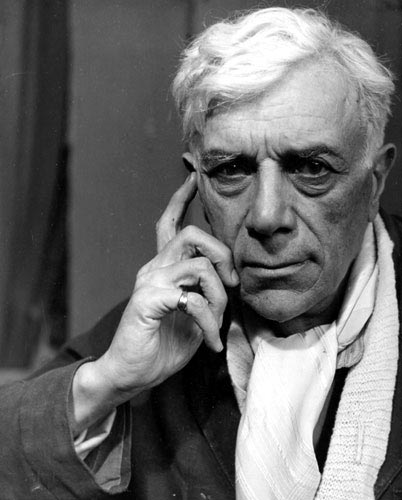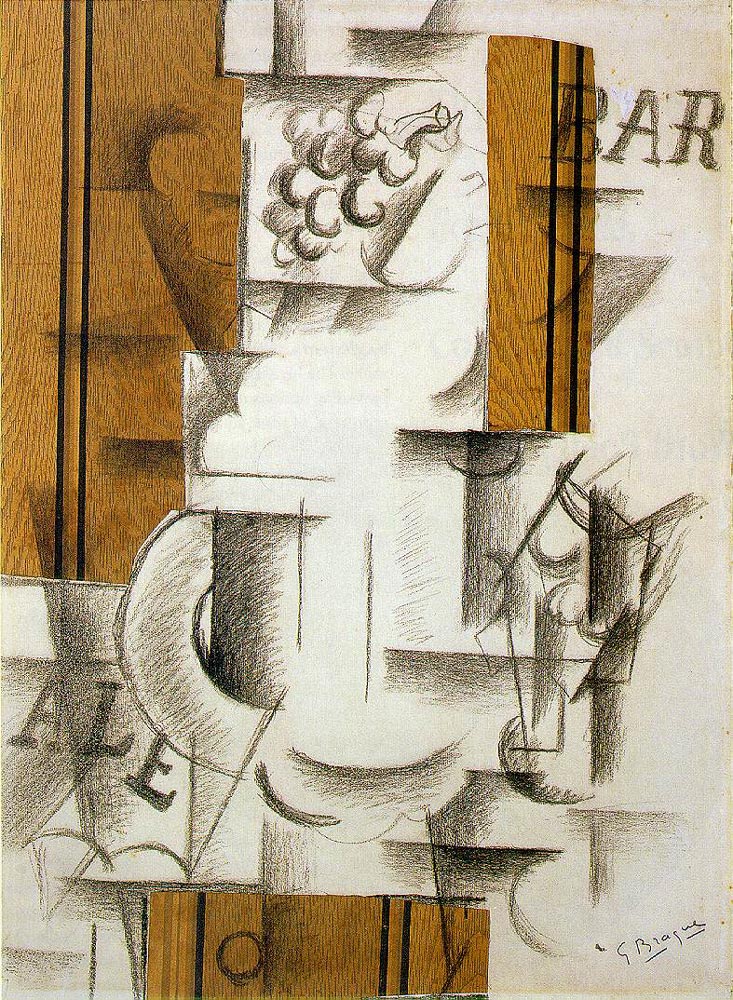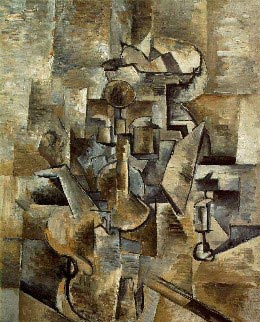| Georges Braque | |
|---|---|
 |
|
| Born | May 13, 1882 Argenteuil, Val-d’Oise |
| Died | Aug. 31, 1963 (at age 81) Paris |
| Nationality | French |
| Movement | Cubism, Fauvism |
| Field | Painting, Drawing, Sculpture, Printmaking |
| Works | View Complete Works |
One of the most esteemed artists is French artist Georges Braque. Many art enthusiasts admire Braque for his beautiful paintings. He has over 30 famous pieces, but he is best known for his still life works. He started his career painting landscapes before he discovered his love for painting still life. Some of his best art pieces are still life.
He was a contemporary of Pablo Picasso. Together, they developed Cubism, the most influential art movement of the 20th century.
Childhood and Early Life
Georges Braque was born the 13th of May, 1882, in Argenteuil, Val-d’Oise, one of the most populous communes of Paris, France. He spent his childhood in Le Havre. As a child, he was already being taught on how to become a decorator and house painter. This was his grandfather and father’s occupation.
When he was about 15 years old, he took night classes to study art painting at the Ecole des Beaux-Arts in Le Havre. He then became decorator’s apprentice in Paris and was able to get his craftsman certificate in 1901. He went to Academie Humbert the following year and stayed there to paint for almost two years. That’s where he met and became friends with Francis Picabia and Marie Laurencin. They were both followers of Cubism.
His Early Life Works
Braque’s first pieces were mostly impressionistic, characterized by small and thin yet visible brush strokes. When he saw the works exhibited by the Fauves in 1905, which mainly emphasized strong colors over the representational values retained by impressionism, he adopted their Fauvist style.
Henri Matisse and Andre Derain spearheaded the Fauvism movement but it only lasted for a few years. These painters portrayed their emotions through the use of brilliant colors.
Othon Friesz and Raoul Dufy were some of the painters who worked with Braque to develop a Fauvist style but more subdued. They all shared the same hometown, so Braque travelled with Friesz to L’Estaque to Antwerp and back to Le Havre to work on his paintings.
He was successful in exhibiting his Fauve works at the Salon des Independants in May 1907. In that same year, his painting style evolved slowly due to the influence of Paul Cezanne, a painter who died by 1906. Cezanne’s art pieces were all shown in exhibits in Paris in September of 1907, paving the way for Cubism.
Cubism
 From 1908 to 1913, Braque’s works reflected his newfound passion and curiousness with geometry and other simultaneous perspective. He studied lighting effects extensively until he was able to reduce architectural structures to geometric figures. He approximated cubes and rendered proper shadings to achieve flat and dimensional looks.
From 1908 to 1913, Braque’s works reflected his newfound passion and curiousness with geometry and other simultaneous perspective. He studied lighting effects extensively until he was able to reduce architectural structures to geometric figures. He approximated cubes and rendered proper shadings to achieve flat and dimensional looks.
This style was depicted in his painting, Houses at l’Estaque. He showed visual illusion and artistic representation in this piece.
In 1909, he started to work side by side with the famous Pablo Picasso, who was also interested in a similar painting style. Both painters were influenced by Cezanne.
Braque mainly focused on Cezanne’s multiple-perspective ideals. He celebrated contemplation while Picasso celebrated animation. It was said that Cubism resulted from the joint efforts of both artists. They began working on its development in 1908. Both of them produced various paintings with complex patterns of faceted forms with the use of monochromatic color. Today, that particular style of painting is known as Analytic Cubism.
In the summer of 1911, Braque and Picasso painted side by side in Ceret. They produced paintings that were almost similar. It was almost impossible to distinguish them.
The two gifted painters experimented with collage and papier colle in 1912.
When Louis Vauxcelles, a critic of French art, first saw a painting by Braque in 1908, he said that it was packed with little cubes. Thus, the term Cubism was adopted. Cubism spread quickly in Paris and all throughout Europe.
Braque and Picasso continued their collaboration until 1914. When World War I began, Braque enlisted with the French Army. In May 1915, he suffered temporary blindness as a result of the battle in Carrency. It took him a lot of time to recover.
Working Alone and Developing His Own Style
 It was late 1916 that Braque resumed painting. He worked alone and moderated the harsh abstraction of cubism. He developed his own personal style by using textured surfaces and brilliant colors.
It was late 1916 that Braque resumed painting. He worked alone and moderated the harsh abstraction of cubism. He developed his own personal style by using textured surfaces and brilliant colors.
He started painting still life when he relocated to the Normandy sea coast. He did a lot of still life paintings and placed emphasis on structure. One of his famous works, the Blue Guitar depicted this style. It still hangs in the Allen Memorial Art Museum.
Braque became friends with another cubist artist named, Juan Gris during his period of recovery.
He continued to work and produced a great number of paintings, graphics and sculptures. He passed away in Paris on the 31st of August, 1963. He was buried in the cemetery of the Church of St. Valery in Normandy. He was the one who designed the windows of the church.
George Braque’s works are now displayed in major museums all over the world.
Style
Braque mostly used monochromatic and neutral colors. He worked on multiple perspectives and painted still life images. His style of Cubism is more free and loose with intensifying colors, but he remained committed to simultaneous perspective and fragmentation.
His Works
Braque’s famous works include the following: Houses at L’Estaque, Fruitdish, Woman with a Guitar, Black Fish and Fruit Dish, Ace of Clubs. Aside from these, he still has other famous works that all entrance each and every art enthusiast.